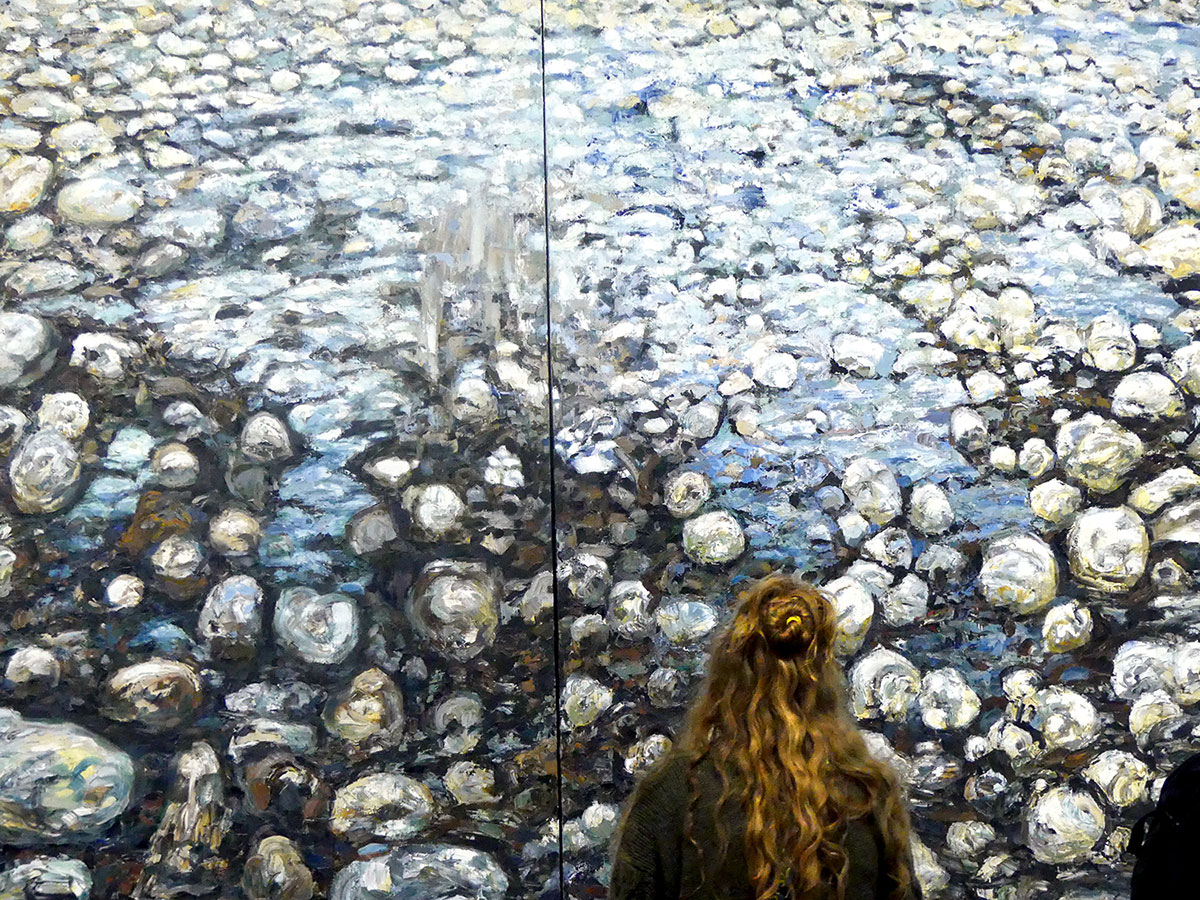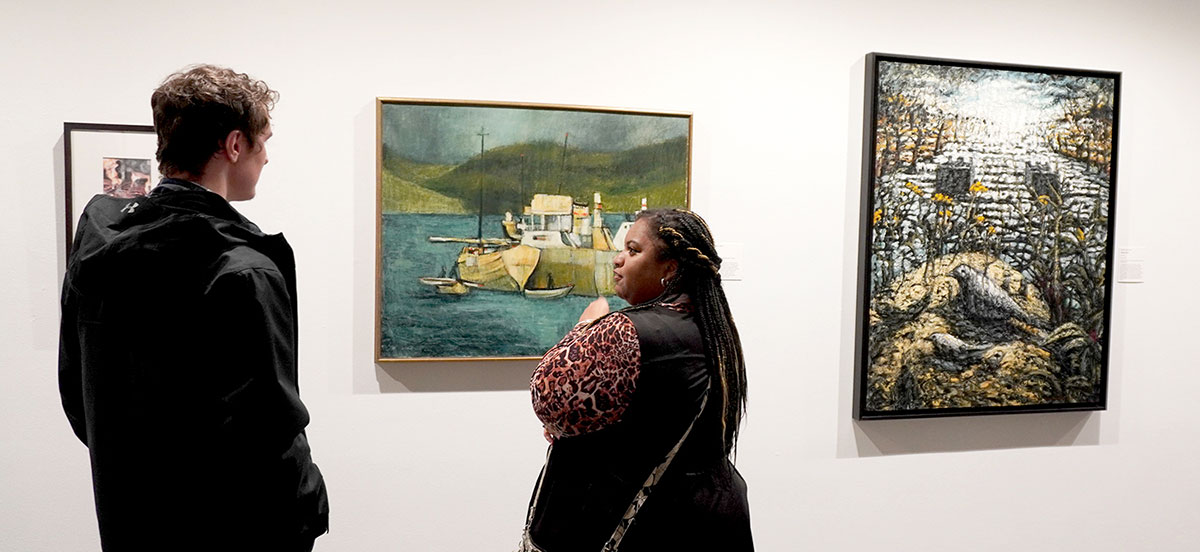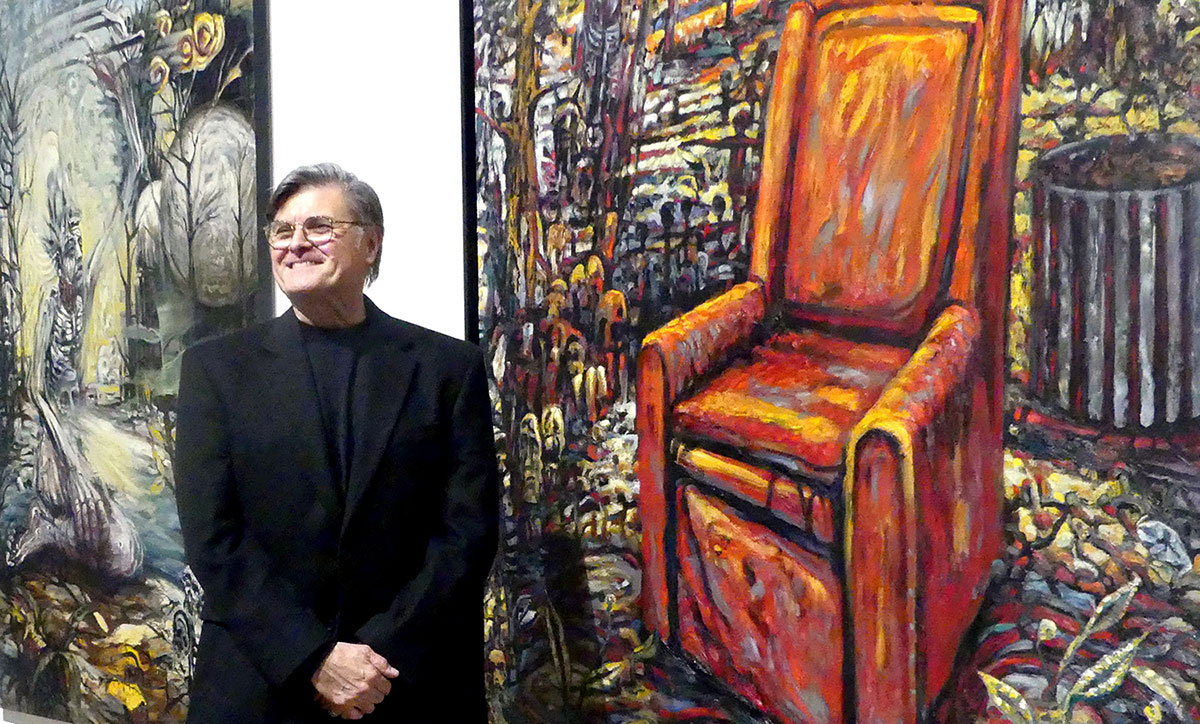Dishman exhibit highlights father, son

Throughout the years, art has changed to reflect the ever-evolving status of the human condition.
In the exhibition “Legacy: The Art of Lowell Daunt Collins and Michael Roqué Collins,” on display at the Dishman Art Museum through March 2, the artists invite us to look into a complicated dreamscape and what it truly means to be human.
“I have been really interested in following imagination and the dream state,” Michael Collins said. “I am willing to let the viewer experience the work and find for themselves a new meaning.”
Lowell Collins died from cancer in 2003, and Michael said the passing of his father had a huge impact on his art. One of the younger Collin’s more recent works, “Touching the Sky,” highlights the struggle of his father’s disease.
“His survival in the midst of what could be a (scene) right outside of Beaumont — his fingers are touching the sky, and the wind turns black,” Michael said. “In the nanosecond before a nuclear blast, flowers decompose and blow in the wind. There’s petrochemical abstraction all around him.”
A lot of Collins’ work also features motifs of the Holocaust. When he was doing a solo exhibition at the Houston Holocaust Museum he was surrounded by survivors. As he showed one of his larger pieces, “Moonstones at Midnight,” a painting depicting stones in a garden at the Buchenwald death camp, he said he had an interaction that has stuck with him.
“I was lecturing to this group of 60 elderly Holocaust survivors, and this man in a wheelchair started crying,” Collins said. “A caretaker walked up to him to ask why he was crying and he said that he used to weed that vegetable garden. If a person, as a child, survived these death camps, that painting brought all those memories back.”

All through his life, Collins said he has had vivid dreams, and once he started to journal them, he also started to paint them. One instance was the dream that inspired “Garden of Stone Wings.”
“I saw these wings on an archeological dig in the forum of Rome,” he said. “I later had this dream where I went out to this bay and it was surrounded by the wings and these openings for the path of man, a mythology from Peru. All this beauty came out of these three openings, except man trampled his.”
On the night before Lowell Collins died, he and his son had a similar dream which turned into Michael’s painting “The Weeping Chair,”
“In the center of the painting is the chair my father spent the last few days of his life on,” Collins said. “I had a really similar dream to his. It was about these train barns on fire. In the brush is his soul, sweeping up with his ribcage and all of the primitive Mesoamerican art he liked to collect.”
When a viewer walks away from his paintings, Michael Collins said he wishes they leave with the hope of a better tomorrow.
“We can be faced with the most brutal, delicate and horrible circumstances in our family, our jobs, and our life as Americans, yet art is the tissue that binds us and reminds us that being human isn’t always easy,” he said.
The Dishman Art Museum is located at 1030 E. Lavaca on the Lamar University campus. Hours are Monday-Friday, 9 a.m.-4 p.m., and Saturday, noon-4 p.m. For more, visit lamar.edu/dishman.

